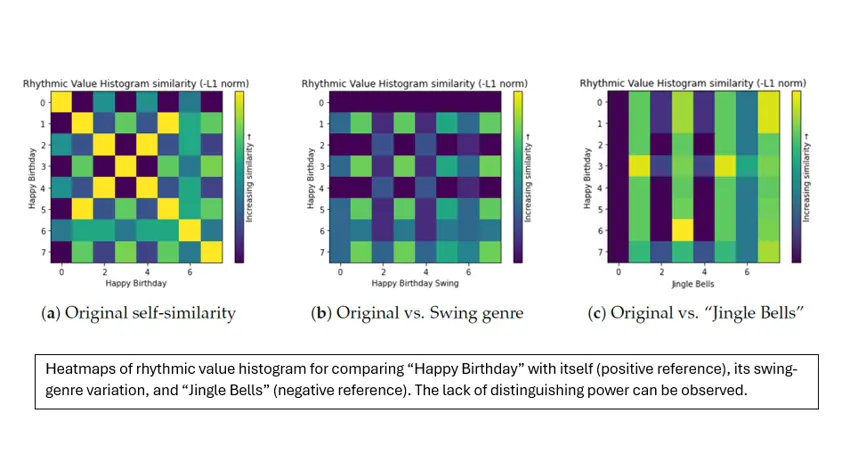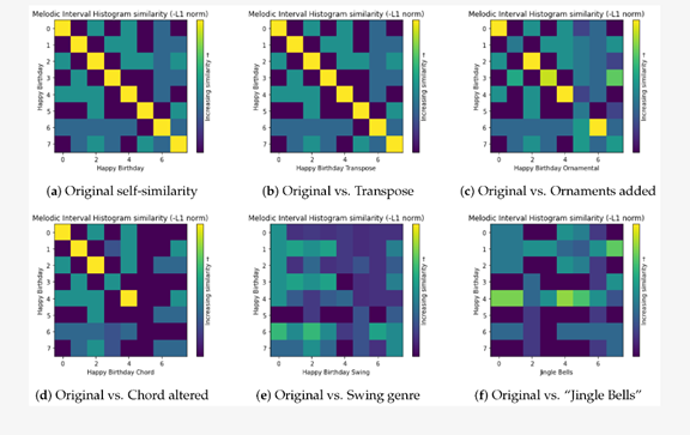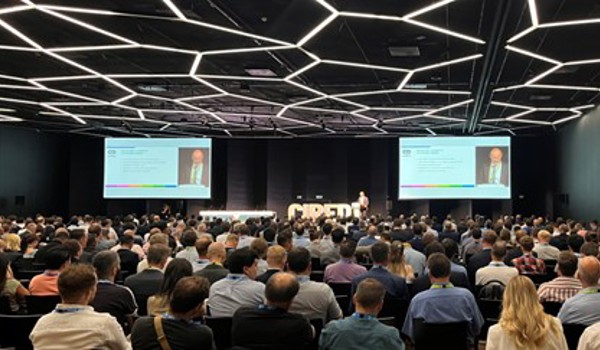04 Sep 2025
From Melodies to Machine Learning: Asli Saner’s Quest to Detect Musical Plagiarism
Can a machine spot a stolen tune? Blending music, mathematics, and machine learning to tackle the challenge of musical plagiarism.

Detecting plagiarism in music - heatmaps comparing versions of Happy Birthday and Jingle Bells
Can artificial intelligence help us identify cases when one song copies another? Asli Saner, a former Fourth-Year Project student under the supervision of Professor Min Chen at Oxford e-Research Centre, set out to answer that question—combining her knowledge and love of music with the power of machine learning and data visualisation.

Asli Saner and Professor Min Chen
Can artificial intelligence help us identify cases when one song copies another? Asli Saner, a former Fourth-Year Project student under the supervision of Professor Min Chen at Oxford e-Research Centre, set out to answer that question—combining her knowledge and love of music with the power of machine learning and data visualisation.
Now a Digital Graduate at BP, where she works across data engineering, visualisation, and generative AI, Asli reflects on her final-year project as a turning point. “Music has always been part of my life,” she says. “I started playing piano at the age of five. So when Professor Chen pitched the idea of exploring musical plagiarism using AI, it felt like a challenge – could I pull it off? I wanted to do something different and this seemed the perfect choice.”
The Sound of Similarity
Unlike text or image plagiarism—areas already well-explored in machine learning—music plagiarism detection remains underdeveloped. Asli began with a deceptively simple question: What makes us, as humans, feel that a song is plagiarised? And more importantly: Can those instincts be programmed?
She soon found that some musical features weren’t as useful as expected. “Rhythm didn’t help much,” she says. “It’s too general. Lots of songs share similar rhythms.” But melody and vertical intervals—the distance between notes played simultaneously—proved much more revealing.
Using a software tool called JSymbolic, Asli analysed 33 musical features from two well-known songs—Happy Birthday and Jingle Bells—creating five altered versions of each by tweaking things like tempo and ornamentation. She even created a swing version of Happy Birthday. Each version was converted into MIDI format and segmented into musical bars. The software was then used to extract feature vectors to measure musical similarity.

Visualising Plagiarism
To make sense of the raw data, Asli turned to visualisation. She generated heatmaps to highlight areas of similarity—bright spots lighting up where features overlapped between the original and altered versions. For a real-world test, she compared ‘Under Pressure’ by Queen with ‘Ice Ice Baby’ by Vanilla Ice—a famously debated case of musical borrowing.
Next came the machine learning technology. Asli trained her own AI models using these visual heatmaps, with separate models specialising in features like melody and interval structure. By combining outputs from multiple models using another AI technique, she created an ensemble model for detecting concerned similarity between two pieces of music. As an explainable AI procedure, she used a final composite heatmap to ensure that humans can interpret and validate the model’s judgement about any possible plagiarism.
Importantly, AI didn’t replace human judgment; it supported it. “AI brings the maths,” she explains. “It gives you an unbiased presentation of the evidence. But ultimately, it’s a human that makes the final call.”
An Eye on the Future
There’s currently no standard legal framework for plagiarism detection in music. But Asli’s work shows what’s possible: a systematic, interpretable method that could one day support legal argumentation or inform public opinion.
For now, her research stands as a powerful example of how cross-disciplinary thinking—music, AI, visualisation—can tackle real-world problems in innovative ways.
Find out More
- Music Similarity Detection Through Comparative Imagery Data in MDPI’s Applied Sciences Journal, July 2025 https://www.mdpi.com/2076-3417/15/14/7706
- Asli Saner LinkedIn profile




